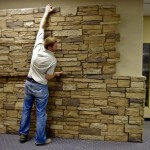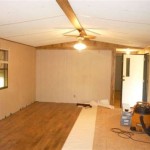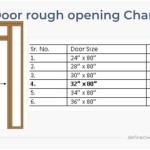How Much To Charge As An Interior Decorator
Determining the appropriate fee structure as an interior decorator is a crucial aspect of operating a successful business. It requires a multifaceted approach considering experience, market conditions, the scope of services offered, and the target clientele. An understanding of various pricing models and their implications is essential for both attracting clients and ensuring profitability.
Several factors influence the pricing strategy an interior decorator chooses to implement. Local market rates for similar services act as a benchmark. The decorator's level of expertise and the complexity of projects they typically undertake also play a significant role. Overhead costs, including office rent, software subscriptions, marketing expenses, and insurance, must be factored into pricing to guarantee financial viability. Furthermore, the specific services offered, whether it's a simple consultation, a complete room redesign, or project management, will significantly impact the final cost.
Establishing a pricing framework is a continuous process. Decorators should consistently evaluate their rates against industry standards and adjust them as needed to reflect their growing experience and the evolving needs of their target market. Transparency in pricing is paramount. Clients should be provided with a clear breakdown of all fees involved, minimizing potential misunderstandings and fostering trust.
Understanding Different Pricing Models
Interior decorators employ a variety of pricing models to charge for their services. Each model has its advantages and disadvantages, and the optimal choice often depends on the nature of the project and the decorator's business preferences. The most common pricing models include hourly rates, flat fees, cost-plus pricing, percentage-based pricing, and hybrid models combining elements of several approaches.
Hourly Rates: Charging an hourly rate involves billing clients for the actual time spent working on their project. This model is well-suited for projects with undefined scopes or those involving ongoing consultation and support. It offers flexibility, allowing the decorator to adjust their earning based on the actual time invested. However, it can be difficult for clients to predict the total project cost upfront, potentially leading to budget concerns. To mitigate this, decorators often provide estimated hourly ranges or project hour caps.
Implementing an hourly rate requires meticulous time tracking. Decorators must accurately document all time spent on project-related tasks, including consultations, design development, vendor communication, and site visits. Reliable time tracking software or detailed manual logs are essential for accurate billing. The hourly rate itself should reflect the decorator's experience, skill level, and the market rate for similar services in the area. It should also account for overhead costs and desired profit margins.
Flat Fees: A flat fee, or fixed fee, is a predetermined price charged for a specific set of services. This model provides clients with cost certainty and simplifies budgeting. It is often used for well-defined projects with clear deliverables, such as a room redesign or the creation of a design concept. The flat fee needs to accurately reflect the estimated time and resources required to complete the project. Careful scoping is crucial to determine the fee. This model shifts the risk of underestimation from the client to the decorator.
Calculating a flat fee requires a comprehensive understanding of the project scope. The decorator must assess the project complexity, the time required for each task, and the cost of materials and resources. A detailed project plan outlining all deliverables and timelines is essential for accurate estimation. Flat fees should also incorporate a contingency buffer to account for unforeseen challenges or changes in scope. Clear communication with the client regarding the services included in the flat fee is critical to avoid scope creep.
Cost-Plus Pricing: Cost-plus pricing involves charging the client the actual cost of goods and services plus a markup to cover overhead and profit. It is commonly used for projects involving the purchase of furniture, fixtures, and equipment. This model offers transparency, as clients can see the actual costs incurred. However, it requires careful tracking of all expenses and clear documentation of the markup percentage. This pricing model relies heavily on the decorator's purchasing power and vendor relationships.
Implementing cost-plus pricing requires meticulous record-keeping of all expenses. Decorators must track the cost of goods purchased, shipping and handling fees, installation charges, and any other project-related expenses. The markup percentage should be clearly defined and communicated to the client upfront. It should be based on the decorator's overhead costs, desired profit margin, and the level of service provided. Transparent invoicing and detailed cost breakdowns are essential for building trust with clients.
Percentage-Based Pricing: Percentage-based pricing involves charging a percentage of the total project cost. This model is often used for large-scale projects with significant material purchases. The percentage reflects the decorator's expertise, project management skills, and the value they bring to the project. Percentage-based pricing can be lucrative for decorators, but it requires careful management of project costs to ensure profitability. This model is highly dependent on the overall project budget.
Determining the percentage requires a thorough assessment of the project scope, complexity, and desired level of service. The percentage should be competitive within the market but also reflect the decorator's experience and expertise. Clear communication with the client regarding the services included in the percentage is essential. This model requires trust and open communication between the decorator and the client, as the decorator's earnings are directly tied to the project's overall cost.
Hybrid Models: Hybrid models combine elements of different pricing approaches. For example, a decorator might charge an hourly rate for initial consultations and design development, then switch to a flat fee for project management and installation. This approach allows for flexibility and can be tailored to the specific needs of each project. However, it requires careful planning and clear communication with the client to avoid confusion. Hybrid models often provide the best balance between flexibility and cost predictability.
Developing a hybrid pricing model requires a deep understanding of the project's various phases. The decorator must identify the tasks that are best suited for an hourly rate, those that can be efficiently managed with a flat fee, and those that require cost-plus or percentage-based pricing. Clear communication with the client regarding the different pricing components and their application throughout the project is essential. A well-structured and transparent hybrid model can provide both the decorator and the client with the most advantageous pricing arrangement.
Negotiating and Communicating Pricing Effectively
Negotiating and communicating pricing effectively is crucial for securing projects and maintaining positive client relationships. Transparency, clarity, and a willingness to discuss pricing options are essential for building trust and establishing mutually beneficial agreements. Understanding the client's budget and priorities is also key to crafting a pricing proposal that aligns with their needs.
Transparency in pricing is paramount. Clients should be provided with a clear and detailed breakdown of all fees involved, including hourly rates, flat fees, markups, and any other charges. Avoid vague or ambiguous language that could lead to misunderstandings. Provide examples of past projects and their associated costs to give clients a realistic expectation of the investment required. Open and honest communication about pricing builds trust and fosters a positive working relationship.
Active listening is a critical skill in price negotiation. Before presenting a pricing proposal, take the time to understand the client's budget, priorities, and expectations. Ask clarifying questions to ensure a clear understanding of their needs and desired outcomes. Tailor the pricing proposal to align with their specific requirements and address any concerns they may have. Demonstrating a genuine interest in their needs will help build rapport and increase the likelihood of a successful negotiation.
Presenting options can be an effective strategy for pricing negotiation. Instead of offering a single price, provide clients with several options that vary in scope and cost. This allows them to choose the option that best aligns with their budget and priorities. For example, offer a basic package that includes essential services, a standard package that includes additional features, and a premium package that provides comprehensive support. This approach empowers clients to make informed decisions and feel more in control of the project budget.
Factors Influencing Profitability
Profitability in interior decorating is influenced by several factors beyond the pricing model chosen. Efficient project management, effective marketing, cost control, and client satisfaction all play a critical role in maximizing earnings.
Effective project management is crucial for maintaining profitability. Well-organized projects minimize wasted time, reduce errors, and ensure timely completion. This involves carefully planning each project, setting realistic deadlines, and effectively managing resources. Clear communication with clients, vendors, and contractors is essential for avoiding delays and ensuring smooth project execution. Efficient project management not only improves profitability but also enhances client satisfaction.
Effective marketing is vital for attracting new clients and generating revenue. This includes developing a strong brand identity, creating a professional website, and utilizing social media platforms to showcase your work. Networking with architects, builders, and real estate agents can also generate valuable referrals. Targeted marketing campaigns can reach potential clients who are specifically interested in interior decorating services. Consistent marketing efforts are essential for building a robust client base and maintaining a steady stream of projects.
Cost control plays a significant role in profitability. This involves carefully managing overhead expenses, negotiating favorable vendor pricing, and minimizing waste. Tracking project expenses meticulously is essential for identifying areas where costs can be reduced. Implementing efficient purchasing processes and inventory management practices can also help control costs. Effective cost control directly impacts the bottom line and improves overall profitability.
Client satisfaction is paramount for long-term success and profitability. Satisfied clients are more likely to refer new business and become repeat customers. Providing excellent customer service, responding promptly to inquiries, and addressing concerns effectively are essential for building strong client relationships. Soliciting feedback and continuously improving your services based on client input can enhance satisfaction and loyalty. Happy clients are your best marketing asset.

Interior Designer Cost Fees Fixr

Interior Designer Cost Fees Fixr

How Much Does An Interior Designer Cost Pacaso

Interior Designer Cost Fees Fixr

How Much Does It Cost To Hire An Interior Designer Sfd

How Much Do Interior Designers Charge

Interior Designer Cost Fees Fixr
Interior Design Packages What To Include Examples Designfiles Blog

Interior Designer Cost Fees Fixr

How To Charge As An Interior Decorator The Focal Point
Related Posts








